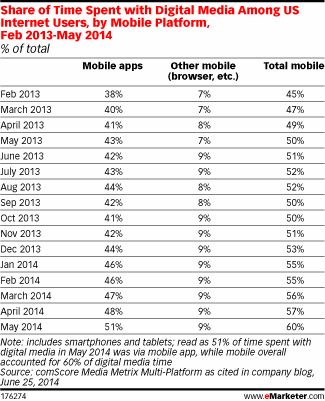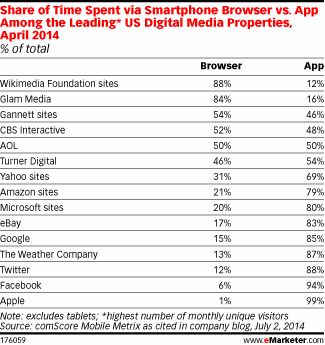Who needs to use a default browser for surfing the web when so many applications allow you to see all the features in an even bigger way At least, that’s what a new report from comScore Media Metrix Multi-Platform indicates.

The research, which covers the month of May for this year, indicates that digital media time has grown quite a bit, with 51 percent growth over the previous period for smartphone and tablet apps.
Mobile apps have been on the rise for some time. A previous Q4 2013 report from Nielsen indicated that Android and iPhone users were spending 65 percent more time with mobile apps than they were two years prior (an estimated 30 hours, 15 minutes compared to 2011’s 18 hours and 18 minutes).
Leading back to this year, a prior April report from comScore Mobile Metrix showed that easy access and mobile optimization were the top marks when it came to using smartphone apps, with the majority of time spent with leading US digital media properties.

By comparison, browsers still managed to get a good amount of time on devices, with Wikimedia Foundation sites and Glam Media leading the charge with 88 and 84 percent, respectively. However, aside from other sites like Gannett, CBS Interactive and AOL, smartphone apps continued to get the most attention overall, out of all the properties looked over for the report.
The rise in app usage versus browsers may continue, but the distinction between the two is likely to be less clear to users in the future. Both the upcoming Android L and iOS 8 operating systems will further blur the differences between apps and browsers, seamlessly moving from an app to a browser when needed. The increasing power of mobile hardware along with better graphics drivers will make HTML 5 perform better, and some apps may switch to HTML 5 browser-based apps from native apps in consequence.
It’ll be interesting to see what more can be done with browsers, compared to direct applications. Which do you prefer to use
Source: eMarketer

